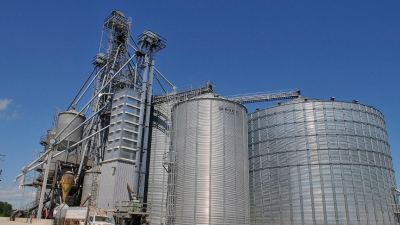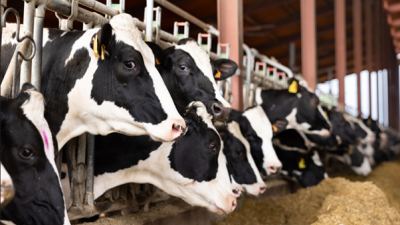10 warning signs of mycotoxins in your swine herd

Why are mycotoxins a problem in pig production?
Mycotoxins are produced by filamentous fungi (moulds) that are ever-present in nature, and under the right conditions, have the potential to contaminate almost all feedstuffs used in pig production. Mycotoxins are not unique to specific moulds, meaning various species can produce the same mycotoxins. There are also single species that produce numerous mycotoxin types. While the significant presence of just one mycotoxin can impact the well-being of pigs, small levels of multiple toxins often lead to more serious issues.
Moulds grow by using nutrients from the infected plants or raw materials that they infect, reducing their nutrient value and changing their taste and/or smell. However, the mycotoxins they produce pose a much bigger risk to animals, with pigs being especially sensitive to this contamination. Most regulatory guidelines will advise on the safe levels of individual mycotoxins. However, these do not consider the cumulative effects of having multiple mycotoxins present in feed.
What impact do mycotoxins have on pigs?
Mycotoxins impair pig’s cellular and tissue integrity, leading to an unhealthy imbalance of different physiological systems. These cause organ malfunction that results in depressed pig performance, decreased immunity and reduced health status. Most mycotoxins can cause acute, but more often chronic toxicosis in pigs. Many toxin types are known for their unique toxicological aspects and can cause specific symptoms, depending on the species, sex, age, contamination level and length, etc.
How to manage mycotoxins in pig production?
Mycotoxin contamination is not a static situation; it changes dynamically day by day. Due to the invisible nature of these toxic compounds, even without signs of mould, there can still be a threat of contamination, making detection more complex. Applying a continuous and well-prepared preventive strategy will help to reduce negative effects. It should be based on HACCP principles, such as detailed risk and hazard analysis, covering the complete feed supply process, housing, farm management and health status control of animals.
By spotting issues early, you can take steps to mitigate the impact of mycotoxins on your pigs’ natural immunity and, subsequently, production profitability.
Here are 10 tell-tale warning signs that all pig producers should watch out for:
1. Visible moulds in pig feedstuffs

Moulds can grow either before or after harvest, during storage, and contaminate almost all pig feed ingredients, so we must monitor potential contamination in feed production, transportation and distribution. Sometimes, the mould infection is visible, allowing you to identify the potential risk and follow preventive actions.
However, mycotoxins are not visible to the naked eye and require specialised detection techniques. To help you identify mould types, Alltech has prepared a quick guide which you can download here.
2. Measurement and data recording

We often miss the signs of mycotoxins in animals until they are already causing performance losses. Detailed and accurate measurement-based data recording gives a good basis to survey the situation correctly and develop an effective prevention strategy.
A slight shift in feed conversion can easily cause serious economic losses and is just one example of the different performance parameters that can draw your attention to the potential presence of mycotoxins.
3. Reduced feed intake in pigs

Sometimes, the simple presence of moulds can cause unfavourable changes in feed taste and/or smell, but in many other cases, their toxic by-products directly affect the appetite of pigs. In extreme cases, total feed refusal or intensive feed rooting is visible.
More often, a slight drop in daily feed intake leads to notable performance losses, especially in average daily weight gain.
4. Inconsistent faeces

Increased visible signs of enteral disorders in a bigger swine group and even irregular faeces consistency, including changing from slightly softer manure to a highly watery texture containing blood or undigested feed, may indicate a multi-mycotoxin challenge.
The severity of some pathogens (E. coli, Salmonella, Lawsonia, Serpulina species) could also be increased.
5. Reproduction failures

Multi-toxin-contaminated feed can lead to unexpected drops in reproduction performance. The breeding gilts, boars and sows can each be impacted, while piglets can also show signs of intrauterine mycotoxin exposure, such as enlarged vulvas or necrotic teats. Boars may exhibit reduced libido and decreased sperm quantity.
Irregular heats in sows or longer weaning to oestrus interval should be seen as a potential issue. Equally, increased stillbirths, lower than normal litter size or reduced piglet vitality can be among mycotoxin contamination symptoms. Reduced milk let down from the sow may also lead to inadequate piglet growth performance.
6. General pig health status

This is one of the most difficult impacts of mycotoxin ingestion to determine. However, increased culling and higher mortality can point us toward potential mycotoxin issues in swine herds. Reduced success with vaccination programs, increasing infection outbreaks due to pathogens or simply elevated medicine costs can also toxicosis related issues.
7. Increased incidence of prolapses

Increased rectal and/or urogenital prolapses can quickly point to a mycotoxin issue. While there could be different causes of these symptoms, it is one of the clinical signs most frequently attached to pigs ingesting mycotoxins.
Changes to organ ligaments are a direct effect, while frequent diarrhoea from abdominal pressure is one of the most likely indirect symptoms.
8. Altered pig behaviour — vomiting

Lethargy or even overexcited visible stress in bigger animal groups can be connected to mycotoxin contamination. Munching, foaming of saliva around the mouth and, more often, increased vomiting can draw our attention to a potential mycotoxin situation.
9. Increased skin sensitivity

Increased skin sensitivity, leading to skin lesions at the top of the ears or on tails can have several contributing factors, but mycotoxin contamination should not be ruled out as a potential cause.
10. Drop in pig performance parameters

Research continually demonstrates the negative impacts of mycotoxins on animal performance. However, impacts may not always be obvious in swine herds.
Loss of homogeneity in same-aged groups, slight changes in daily feed intake and growth parameters or reduced feed efficiency can all indicate a subtle mycotoxin issue and lead to significant economic loss. More serious sudden changes, like increased mortality, could indicate acute contamination and should be investigated immediately.
Detection and mitigation
Mycotoxins are an unavoidable problem in pig production; there is no effective way to entirely eliminate their presence. However, that does not mean that there is nothing that you can do to help mitigate their adverse effects.
Alltech provides a suite of modern detection services that will help you uncover the hidden threat in your feed.
Seeking a quick and accurate test for mycotoxins?
Producers looking for quick on-farm mycotoxin detection can look to Alltech® RAPIREAD™. Suitable for detecting seven of the main mycotoxins in individual feed ingredients, and integrating both online tools and the Neogen Raptor® test device, this rapid-test platform offers in-depth analysis and real-time actionable advice backed by reliable data.
Looking for a broad-spectrum view of mycotoxin risk?
For producers looking for an overarching image of on-farm feed contaminants, the Alltech 37+® mycotoxin analysis can bring a comprehensive array of hidden challenges to light. The cornerstone of the Alltech mycotoxin management programme, this laboratory-based testing service investigates samples of your feed, searching for and identifying up to 54 individual mycotoxins.
Want to reduce mycotoxin adsorption in your pigs?
After identifying the mycotoxins contaminating your raw materials and pig’s feed, the next step is mitigation using a mycotoxin binder, such as Mycosorb A+® from Alltech in the pig’s diet. Mycosorb A+® reduces mycotoxin absorption within the animal, offsetting the risks to health and productivity that are associated with mycotoxin-induced damage.
Mycotoxin related issues are not always easy to identify in animals, however there are some key signs to watch out for. Sign up to download the protocol poster that our mycotoxin experts developed to guide you through the daily checks for potential signs of mycotoxin problems in yourswine herd.
Sign up to download the protocol poster that our mycotoxin experts developed to guide you through the daily checks for potential signs of mycotoxin problems in your poultry flock.
Fill out the form below to receive a copy.
2020 European Summer Harvest Survey
Mycotoxin contamination starts in the field pre - harvest, and due to the increasing demands from the end consumer, and the growing concern surrounding food quality, animal feed safety has become an important topic in agriculture. To help address this, and allow producers and feed mills make the most effective management decisions to mitigate the challenge, Alltech has completed its 8th annual Summer Harvest Survey. In the 2020 survey, feed and ingredient samples from across Europe were analysed to create an overview of the mycotoxin risk throughout the continent. Find out more here.














